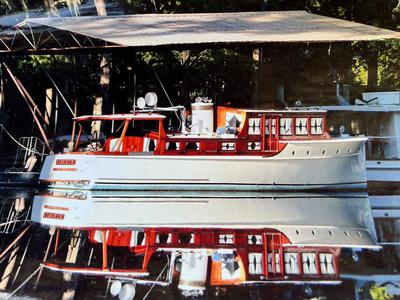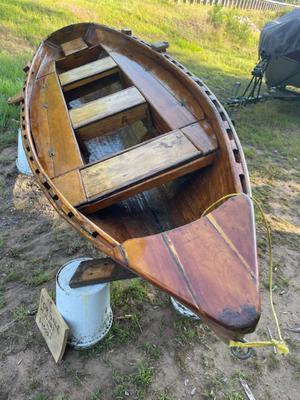- Home
- Latest
- Your Boats
- Your Boats 2
- Your Boats 3
- Your Boats 4
- Readers Tips
- Your Yarns.
- Understanding Boat Repair
Understanding Boat Repair
by Kimberly McNath
(Fellows, CA)
Ask any boat owner what he likes most about his vessel.
Some will mention beauty, others will like the speed or handling ability.
A few like their boat's layout, the capacity to take chop or to ease through the waves without shuddering.
***C2Add.shtml***You can bet your bottom dollar not one will say anything about how effectively their bilge pump works... until there is an emergency and the need for boat repair.
Wooden boats are decidedly special, riding the swells between durability and beauty.
If you are fortunate enough to own one for very long, you will eventually experience an unsettling intake of water in the bilge or a spot of wet not normally found in dry areas.
These are signs the boat's structure may be compromised in some way.
A wooden boat is constructed to weather rigorous use, retain the safety of passengers and stay afloat.
In trade, she asks a bit more attention than her plastic and metal cousins, to keep her operating in top form.
Because of wood's appealing properties of pliability and strength, specific methods of construction have developed over the years to deliver strong, lightweight and naturally buoyant watercraft.
Each construction method has inherent weaknesses, however, making a practice of diligent and careful inspections of the hull mandatory.
Early detection is always money-saving; some areas are simply prone to developing leaks.
Storage in dry dock allows a wooden boat to dry out and drying wood tends to shrink.
Due to shrinkage, stresses on the wood hull can occur, causing gaps, un-natural pulls on the framing and loose connections.
Problems that allow water infiltration:
- The appearance of spaces between planks
- Sprung planks
- De-lamination
- Hull damage from striking submerged objects
Problems that lead to bigger problems:
- Loose plank-to-frame fastenings
- Stress damage to deck beams and shelf
- Dry Rot
- Rusted Screws
Repairs that are needed below the waterline usually require hoisting the boat out into dry dock.
Replacing damaged or rotted materials with marine-grade woods is a must.
The simpler ply construction of canoes, kayaks and rowboats make them possible candidates for DIY repairs, while more complex cold-molded, strip or plank repairs on larger vessels are best attended by a seasoned and knowledgeable marine carpenter.
Having a working knowledge of the proper woods, thicknesses, bonding agents and fillers, caulking and sealing techniques are a science unto themselves.
So make sure you keep an eye on your boat’s condition and keep up with maintenance on a regular basis to avoid major problems later down the road.
Want to add more photos?
Photo Uploader
If you are having problems uploading Photos or would like to add more click on this link for the Upload Form.







